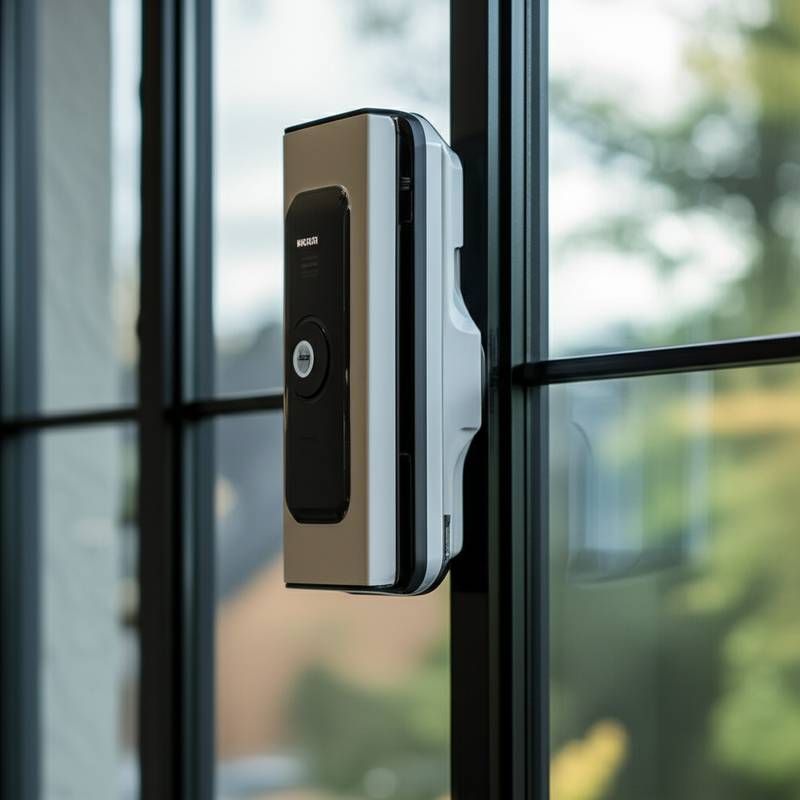Why Robotic Window Cleaners Are Must-Haves in 2025
Smart homes evolve rapidly, with automation extending to unexpected areas. Intelligent thermostats and self-adjusting lights represent just the beginning. Window cleaning, once a manual chore, now benefits from robotic solutions that provide spotless results, enhanced safety, and effortless integration.
These devices address practical needs in modern households. They handle vertical surfaces with precision, reducing physical effort. As automation advances, robotic window cleaners emerge as essential tools for maintaining bright, clean spaces.
The Evolution of Automated Cleaning
Automation progresses from floors to walls and windows. Consumer surveys indicate rising interest in cleaning robots, fueled by demanding schedules and the need for reliable outcomes. The principles behind robotic vacuums now apply to glass surfaces, enabling devices to manage repetitive tasks independently.
Robotic window cleaners employ suction mechanisms, sensors, and navigation algorithms to traverse glass, mirrors, and tiles. They navigate edges and corners accurately, adapting to varied surfaces. This technology converts hazardous or monotonous work into a straightforward operation.
Homeowners gain spaces that self-maintain, aligning with trends in responsive environments. Clean windows enhance light flow, contributing to overall comfort.
Enhancing Safety Through Design
Conventional window cleaning requires ladders and awkward positions, posing risks in tall buildings or expansive homes. Robotic cleaners secure themselves to glass via robust suction, progressing systematically while sensors avoid accidents.
In urban environments with extensive glass facades, these devices clean exteriors without outdoor access. Advanced models include reserve power to maintain attachment during outages. A city resident recently cleaned a full-length balcony window independently, illustrating the empowerment these tools provide.
Automation transforms specialized tasks into daily routines, supported by adaptive technology.
Achieving Precision with Advanced Sensors
Sensors form the core of robotic window cleaners, utilizing mapping and algorithms for thorough coverage. Devices identify edges, respect frame limits, and accommodate material differences, yielding professional-quality, streak-free results.
Real-time adjustments handle obstacles efficiently. This capability advances independent robotics within homes, promising quicker, quieter operations. Users benefit from overnight cleaning, awakening to unobstructed views.
Such integration marks the future of background maintenance in automated living.
Promoting Sustainability and Efficiency
Sustainability influences consumer choices, and robotic window cleaners align with this focus. They apply minimal water and solution via targeted mists, minimizing waste over traditional methods.
Units feature recyclable components and long-lasting batteries. Manufacturers optimize power use while preserving suction strength. This approach supports eco-conscious smart home designs.
Beyond cleaning, spotless windows maximize natural light, decreasing reliance on electric illumination and aiding energy conservation.
Seamless Integration in Smart Ecosystems
Interconnectivity defines contemporary homes. Top robotic window cleaners connect to voice controls and apps, syncing with other appliances for unified management.
Schedule sessions for unoccupied periods or ideal weather. Occupancy detection pauses operations when needed. Centralized interfaces simplify oversight of multiple devices.
This harmony elevates user experience, making integration a standard expectation.
Transitioning from Novelty to Necessity
Initially positioned as premium items, robotic window cleaners now offer accessible pricing and superior performance. This parallels the trajectory of robotic vacuums, evolving from curiosities to staples.
Market data reveals expanding demand for smart cleaning solutions. Consumers prioritize time savings and quality consistency. These devices deliver reliable benefits to routines.
Key Innovations Shaping Performance
Brands introduce features like edge sensors for seamless glass and AI-enhanced planning. Suction adapts to textures for stability across surfaces.
Updates include reduced noise, extended batteries, and accelerated cycles. These developments ensure unobtrusive operation, allowing focus on daily priorities.
Advancements underscore reliable, background automation in smart technology.
Real-Life Impacts on Daily Comfort
Robotic window cleaners influence living spaces profoundly. Unhindered natural light brightens rooms and elevates moods. Effortless maintenance fosters subtle enhancements in well-being.
Families eliminate weekend hazards; those with limited mobility regain autonomy. Remote workers enjoy refreshed settings. These effects highlight the technology's role in improving quality of life.
Devices excel by integrating seamlessly, enhancing comfort without disruption.
Addressing Common Concerns
Hesitations around upkeep, dependability, and expense persist. Market maturity resolves these, with simple maintenance via washable pads and accessible parts. Extended warranties build assurance.
Trust issues, such as fall risks or incomplete cleaning, diminish through dual sensors and refined algorithms. Positive user feedback accelerates acceptance.
Similar to other cleaning robots, adoption grows through demonstrated reliability.
Embracing Automated Home Maintenance
Automation penetrates core home functions, simplifying delicate tasks. Homes now sustain clarity alongside climate and illumination control.
This evolution redefines upkeep, favoring ongoing management over periodic efforts. Residents experience self-sustaining environments that blend technology with ease.
Practical Steps for Adopting Robotic Cleaners
Select models compatible with your smart setup. Review suction ratings and battery duration for your window types. Test on small areas first to verify performance.
Schedule regular pad replacements for optimal results. Integrate with apps for automated routines. Monitor energy use to maximize sustainability benefits.
These steps ensure smooth incorporation, yielding lasting convenience and safety.
